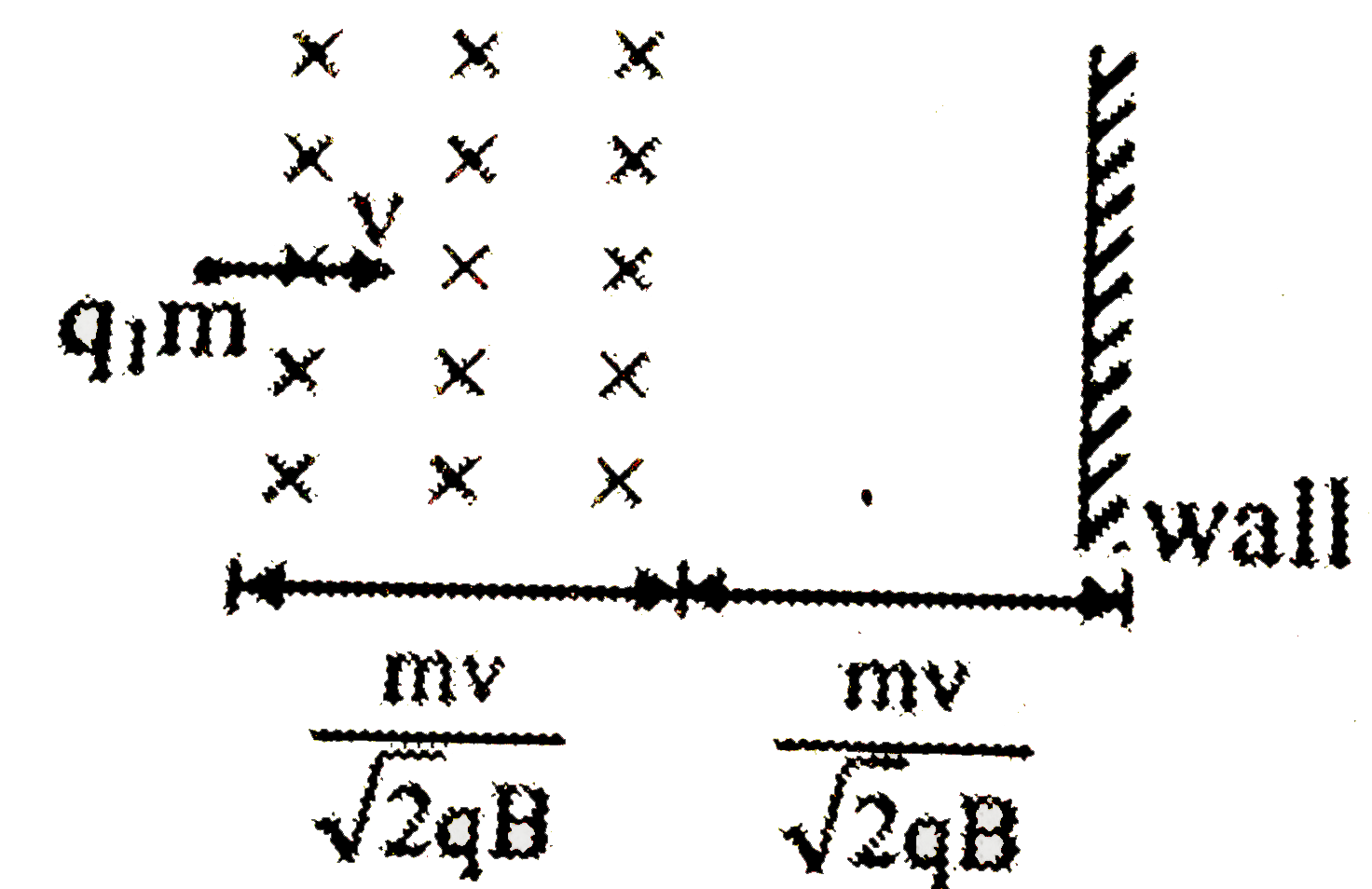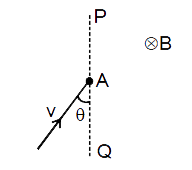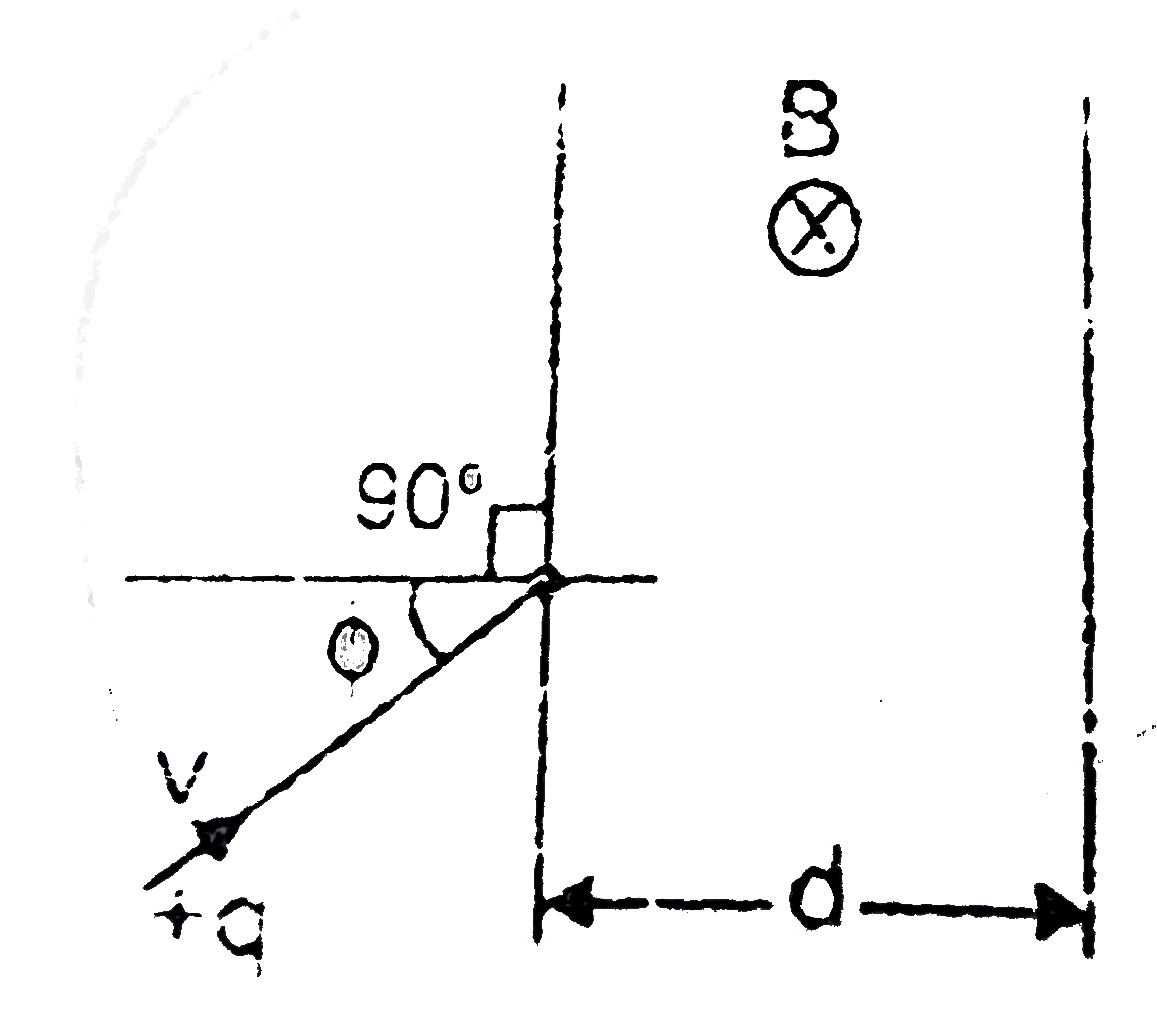A particle of charge q and mass m enters normally (at point P) in a region of magnetic field with speed v. It comes out noramally from Q after time T as shown in Fig. The magnetic field B is present only in the region of radius R and is uniform. Initial and final velocities are along radial direction and they are perpendicular to each other. For this to happen, which of the following expression (s) is are correct?

None of these
The correct Answer is:(a,b,c)
The particle will move along an arc which
is part of a circle of radius:
From Fig. we can see that r=R

Topper's Solved these Questions
- MAGNETIC FIELD AND MAGNETIC FORCESBOOK - CENGAGE PHYSICSCHAPTER - MAGNETIC FIELD AND MAGNETIC FORCESEXERCISE - Exercises Assertion -reasoning
8 Videos
- MAGNETIC FIELD AND MAGNETIC FORCESBOOK - CENGAGE PHYSICSCHAPTER - MAGNETIC FIELD AND MAGNETIC FORCESEXERCISE - Exercises Linked Comprehension
28 Videos
- MAGNETIC FIELD AND MAGNETIC FORCESBOOK - CENGAGE PHYSICSCHAPTER - MAGNETIC FIELD AND MAGNETIC FORCESEXERCISE - Exercises Single Correct
70 Videos
- KINETIC THEORYBOOK - CENGAGE PHYSICSCHAPTER - KINETIC THEORYEXERCISE - Question Bank
31 Videos
- Magnetism and MatterBOOK - CENGAGE PHYSICSCHAPTER - Magnetism and MatterEXERCISE - Question Bank
50 Videos
Similar Questions
A uniform magnetic field "B" into the plane is present in the region enclosed by a circle of radius "R" .A particle of charge 'q' and mass m enters normally into this region with speed v as shown. It comes out normally after time T as shown in figure. Initial and final velocities are along radial direction and they are perpendicular to each other. For this to happen. lf T=(pi R)/(nv) find "n" .[Neglect gravity]
View SolutionA positive charge particle of charge q, mass m enters into a uniform magnetic field with velocity v as shown in the figure. There is no magnetic field to the left of PQ. Find

distance travelled in the magnetic field
View Solution
Knowledge Check
A particle of mass m and charge q enters a region of magnetic field (as shown) with speed v at t = 0. There is a region in which the magnetic field is absent as shown. The particle after entering the region collide elastically with a rigid wall. Time t after which the velocity of particle become antiparallel to its initial velocity is -
 Am(π+4)2qBBm4qB(π+2)CmqB(π+2)Dm4qB(2π+3)
Am(π+4)2qBBm4qB(π+2)CmqB(π+2)Dm4qB(2π+3)A particle of charge q and mass m moving with a velocity v along the x-axis enters the region x>0 with uniform magnetic field B along the ˆk direction. The particle will penetrate in this region in the x-direction upto a distance d equal to
AZeroBmvqBC2mvqBDinfinityA charge particle of charge q and mass m is moving with velocity v as shown in fig In a uniform magnetic field B along -ve z-direction.Select the correct alternative (s).
 AVelocity of the particle when it comes out form the magnetic field is →v−vcos60∘ˆi+vsin60∘ˆjBTime for which the particle was in magnetic field is πm3qBCDistance travelled in magnetic field is πmv3qBDNone of these
AVelocity of the particle when it comes out form the magnetic field is →v−vcos60∘ˆi+vsin60∘ˆjBTime for which the particle was in magnetic field is πm3qBCDistance travelled in magnetic field is πmv3qBDNone of these
A positive charge particle of charge q, mass m enters into a uniform magnetic field with velocity v as shown in the figure. There is no magnetic field to the left of PQ. Find

impulse of magnetic force.
View SolutionA positive charge particle of charge q, mass m enters into a uniform magnetic field with velocity v as shown in the figure. There is no magnetic field to the left of PQ. Find

time spent
View SolutionA positive charge particle of charge q and mass m enters into a uniform magnetic field with velocity v as shown in Fig. There is no magnetic field to the left of PQ. Find (a) time spent, (b) distance travelled in the magnetic field, (c) impulse of magnetic force.

View SolutionIn the figure shown a positively charged particle of charge q and mass m enters into a uniform magnetic field of strength B as shown in the figure.The magnetic field points inwards and is present only within a region of width d.The initial velocity of the particle is perpendicular to the magnetic field and ϕ=30∘.Find the time spent by the particle inside the magnetic field if d=0.2m,B=1T,q=1C,m=1kg and v=1m/s.Use sin45∘=0.7 if required .

View SolutionA charged particle of charge q and mass m enters a magnetic field as shown. Find radius of the circular path and the time spent inside the field. Neglect gravity.

View Solution
